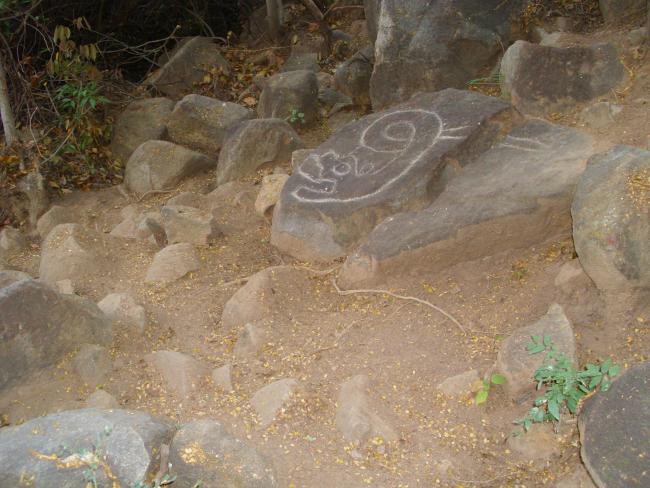
Petrograbados
Estructura
Petrogravure is one of the manifestations of the so-called rock art, that is, those vestiges of human activity that were painted or engraved on rock shelters. The studies of Rubén Manzanilla and Arturo Talavera conclude that in the petroglyphs and in the rock paintings, mythical, calendrical, propitiatory and astronomical events are related. The authors also suppose that the places where they are located were used as sacralized spaces to carry out ceremonies, leave offerings and for certain types of measurements or calendrical or astronomical readings.
The archaeologist Martha Cabrera, who reported in 1982 the discovery of the petroglyphs located in Guerrero, elaborated a detailed catalog of them, thanks to which she concluded that the designs engraved in these rocks were made through the technique of chiseling, predominating the geometric figures (circle, square, rectangle, wavy and straight lines), as well as the schematic representation of the human figure, especially the facial. Zoomorphic designs and some identified as representations of plants were also distinguished.
In the petroglyphs of La Sabana, we can observe a considerable decrease in the representation of human beings; an important presence of animals, which are considered to have been used to propitiate the productivity of the sea and the fertility of the land; and a manifest need to know the calendar, which is reflected in the dot and bar beads.
Reference:
Manzanilla López, Rubén and Arturo Talavera González, 2008, Las manifestaciones gráfico rupestres en los sitios arqueológicos de Acapulco, México, INAH.


